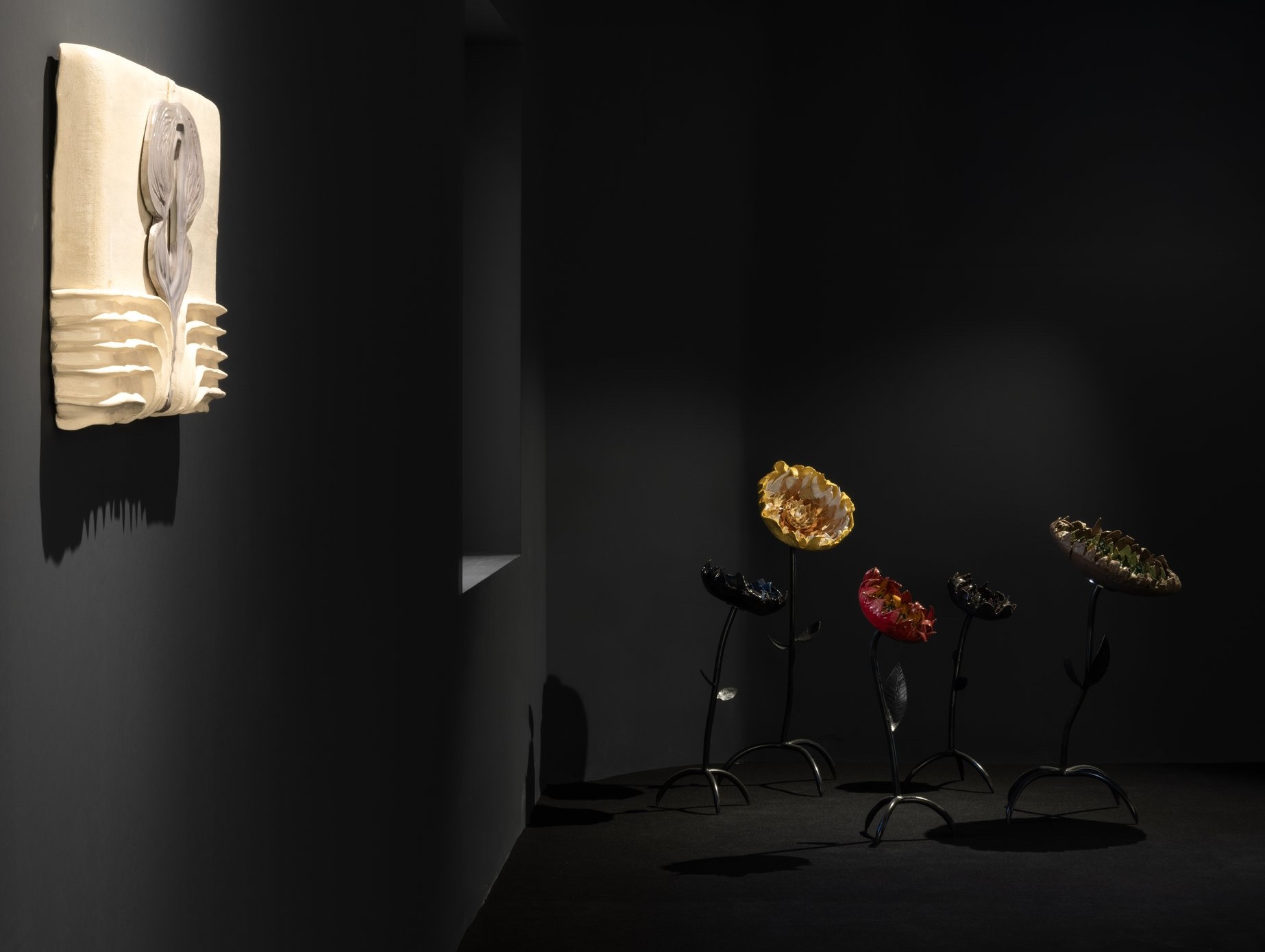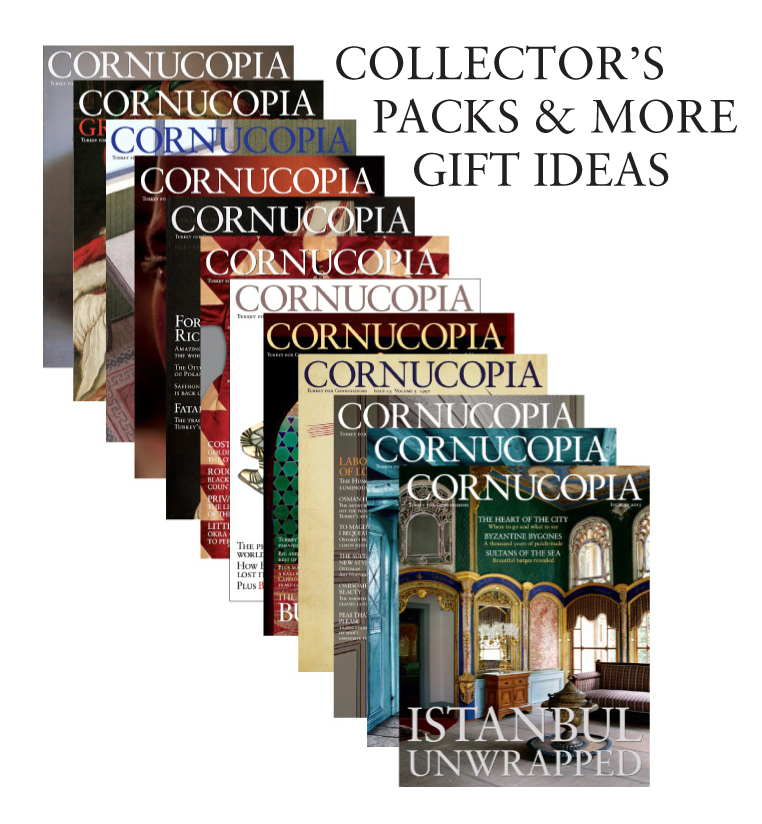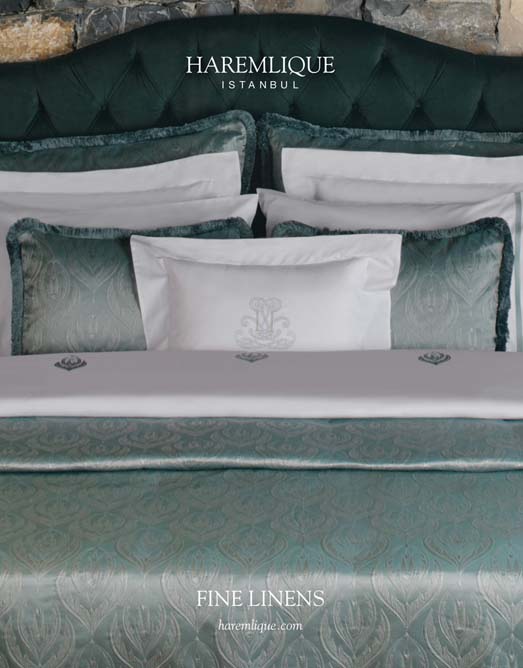‘making paste from rain/you may ask - how?/to dream long enough/for fermentation’
These lines, part of a poem by the multidisciplinary artist Sine İçli, are positioned in the lower-left corner of the opening wall – an ode to clay and its transformative process. This poem introduces İçli’s first solo exhibition at OG Gallery, Jittering Maps. In the top right corner, framed in earthy brown, lies a round white clay impression, the inverted faceprint of the artist’s own face. A dot, a world, a beginning and an end, all at once – a mark of the self. It signals to the audience: here she has journeyed inward, bringing back fragments from her underworld. Subtle, creative and deeply personal, these are the artifacts of her journey.
The opening text deepens the initial impression, drawing inspiration from the Sumerian goddess Inanna, the goddess of Heaven and Earth, and her journey to the Underworld to visit her sister, Ereshkigal, queen of the dead. The myth, The Descent of Inanna, recounts her descent into the realm of the dead, where she experiences death and, eventually, rebirth. 'What initially appears to be death awaiting at the other end, imposed by her own sister, is ultimately reversed through a series of negotiations, where wisdom, empathy and nourishment play key roles, bringing the goddess back to life,' writes Cecília Vilela in the exhibition text.
Interestingly, to date, the world’s first love poem is an ode to Inanna, or, more specifically, it is Inanna’s balbale-song. Discovered by the archaeologist Austen Henry Layard during his excavations at Kalhu (the site of Nimrud, located 30 km from Mosul, Iraq) in 1845, with the assistance of Hormuzd Rassam, this ancient poem honours the goddess Inanna. Given the deep connection between the land and its rich history, it is only fitting that an artist working in this region would draw inspiration from her. The poem’s original cuneiform tablet under Istanbul 2461 can be viewed at the newly renovated Archaeological Museum of Istanbul, a true delight to visit.
On the wall displaying the opening text and poem, the audience is introduced to the piece Treasure Hunt (2024), which features a single hung piece and imprints of the others. The missing pieces are scattered throughout the exhibition space, inviting the audience to embark on a treasure hunt to discover them. This serves as the first exploration of the theme of maps, which unfolds in multiple layers throughout the exhibition. The Map of Two Roads (2024) presents fragmented dark gray ceramics that gradually converge, forming two distinct circles – representing paths or roads, one inner and the other outer. These circular motifs recur throughout the exhibition, drawing the viewer’s eye across the space. Through the Forest (2024), Through the Ocean (2024), and Through the Earth (2024), ceramic pieces hung in close proximity, evoke the essence of karesansui – Japanese sand gardens crafted from gravel and stone, etched into clay. These works forever capture the traces of journeys taken, each one a silent record of the path explored.
The piece Sisters (2024) – a clay sculpture depicting four naked women arranged in a rainbow formation, their exposed breasts and flowing hair suggesting an upside-down pose – marks the entrance to the underworld. Darkened corridors, both in colour and light, unfold beyond it. This could also be interpreted as a gateway to the depths of a dense forest, where the thick canopy creates a similar darkness.
At the end of the first corridor a striking collection of glazed ceramic and steel flowers stands on the left side. Airflower, Sunflower, Earthflower, Moonflower, and Fireflower (2024) evoke a delicate, ethereal presence, heightened by the accompanying soothing piano music. The scene evokes the surreal beauty of Disney’s Fantasia (1940), with its flowing, dreamlike aesthetic. The flowers are both otherworldly and organic, their forms rich with texture.

The second corridor, painted in deep black, leads to a vibrant garden installation from İçli’s Inner Nature Series (2024). Here an array of ceramic flowers – some draped, others standing tall, and some in pairs– create a dynamic yet delicate composition. The garden feels both organic and surreal, drawing the viewer into a world where nature’s quiet beauty meets the artist’s imaginative vision.
Jittering Maps is İçli’s deep reflection into her own psyche and womanhood. For me, the overarching theme of flowers evokes a great deal of emotion – what does it mean to liken a woman to a flower? What has it meant historically, and what does it still mean today? Interestingly, coinciding with my visit to this exhibition, Ayatollah Khamenei shared on X this December: 'A woman is a delicate flower, not a housemaid.' His concept of a flower is very different from mine. For İçli, her flowers are not delicate; they are sturdy, resilient, standing strong and unbreakable. The colloquial saying 'a woman is a flower' is thus deconstructed, reimagined and reclaimed.










